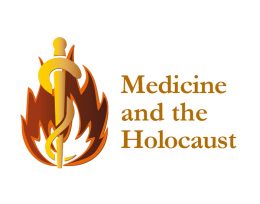 A Holocaust survivor will speak about his experiences as a child hiding from the Nazis in Belgium and his family’s journey on Wednesday, Feb. 22, as part of a Wright State University Medicine and the Holocaust Community Seminar.
A Holocaust survivor will speak about his experiences as a child hiding from the Nazis in Belgium and his family’s journey on Wednesday, Feb. 22, as part of a Wright State University Medicine and the Holocaust Community Seminar.
Sam Lauber, who is one of thousands of Jewish children that were hidden during the Holocaust, will speak at 5 p.m. in the Gandhi Auditorium of White Hall at the Wright State University Boonshoft School of Medicine.
His presentation, “A Hidden Child’s Story,” will focus on his experience as a Jewish child in Belgium during World War II. Through arrangements with Belgian nuns and the Catholic Church, a Belgian family welcomed him into their family and raised him as their own son until the war ended and he was returned to his parents. He credits this family with saving his life during a time when Jews were rounded up and sent off to concentration camps.
Following Lauber’s presentation, Ben Wainblat, a second-year medical student, will speak about Auschwitz-Birkenau, a Nazi concentration camp where at least 1 million Jews were killed in gas chambers or died from starvation, forced labor, infectious diseases, executions or medical experiments. His presentation, “One Medical Student’s Visit to Auschwitz,” will focus on his seven-day trip to Poland that he took with a student group in December 2016.
“My grandfather is a Holocaust survivor. He is originally from Warsaw, Poland,” Wainblat said. “Several of my family members perished in Auschwitz as documented by my grandmother’s father, also a Holocaust survivor. Learning about the Holocaust is still highly relevant in today’s society.”
The Wright State Medicine and the Holocaust Community Seminar series is an outgrowth of the Medicine and the Holocaust course for fourth-year students at the Boonshoft School of Medicine.
The event is free and open to the public. No reservations are needed.
The Wright State University Boonshoft School of Medicine is a community-based medical school affiliated with seven major teaching hospitals in the Dayton area. The medical school educates the next generation of physicians by providing medical education for more than 444 medical students and 443 residents and fellows in 13 specialty areas and 10 subspecialties. Its research enterprise encompasses centers in the basic sciences, epidemiology, public health and community outreach programs. More than 1,500 of the medical school’s 3,229 alumni remain in medical practice in Ohio.

 Milling around
Milling around  Wright State recognizes Nursing Professor Kim Ringo for advancing international student success
Wright State recognizes Nursing Professor Kim Ringo for advancing international student success  Wright State honors graduating students for distinguished doctoral dissertations
Wright State honors graduating students for distinguished doctoral dissertations  Top 10 Newsroom videos of 2025
Top 10 Newsroom videos of 2025  Museum-quality replica of historic Hawthorn Hill donated to Wright State
Museum-quality replica of historic Hawthorn Hill donated to Wright State 